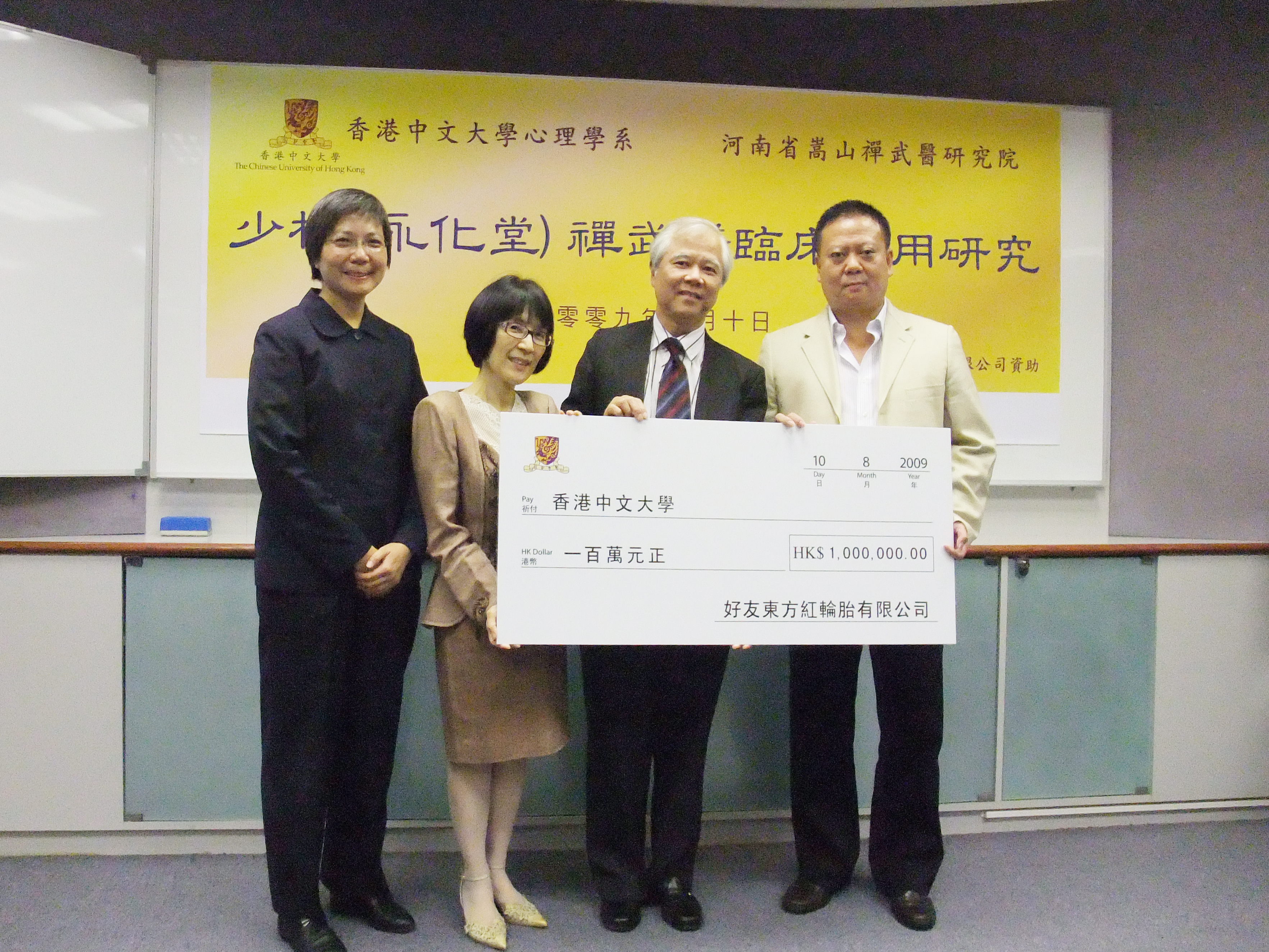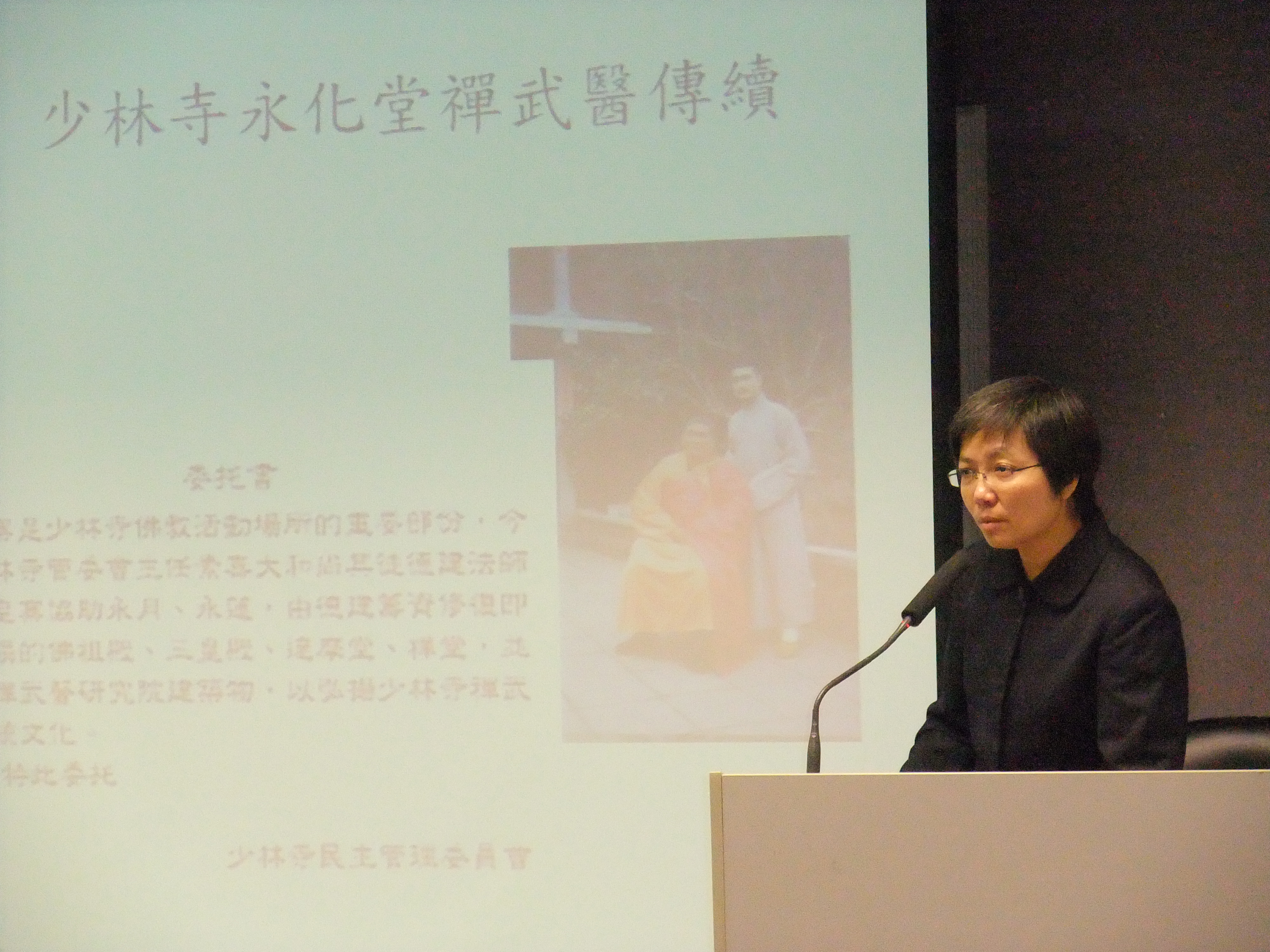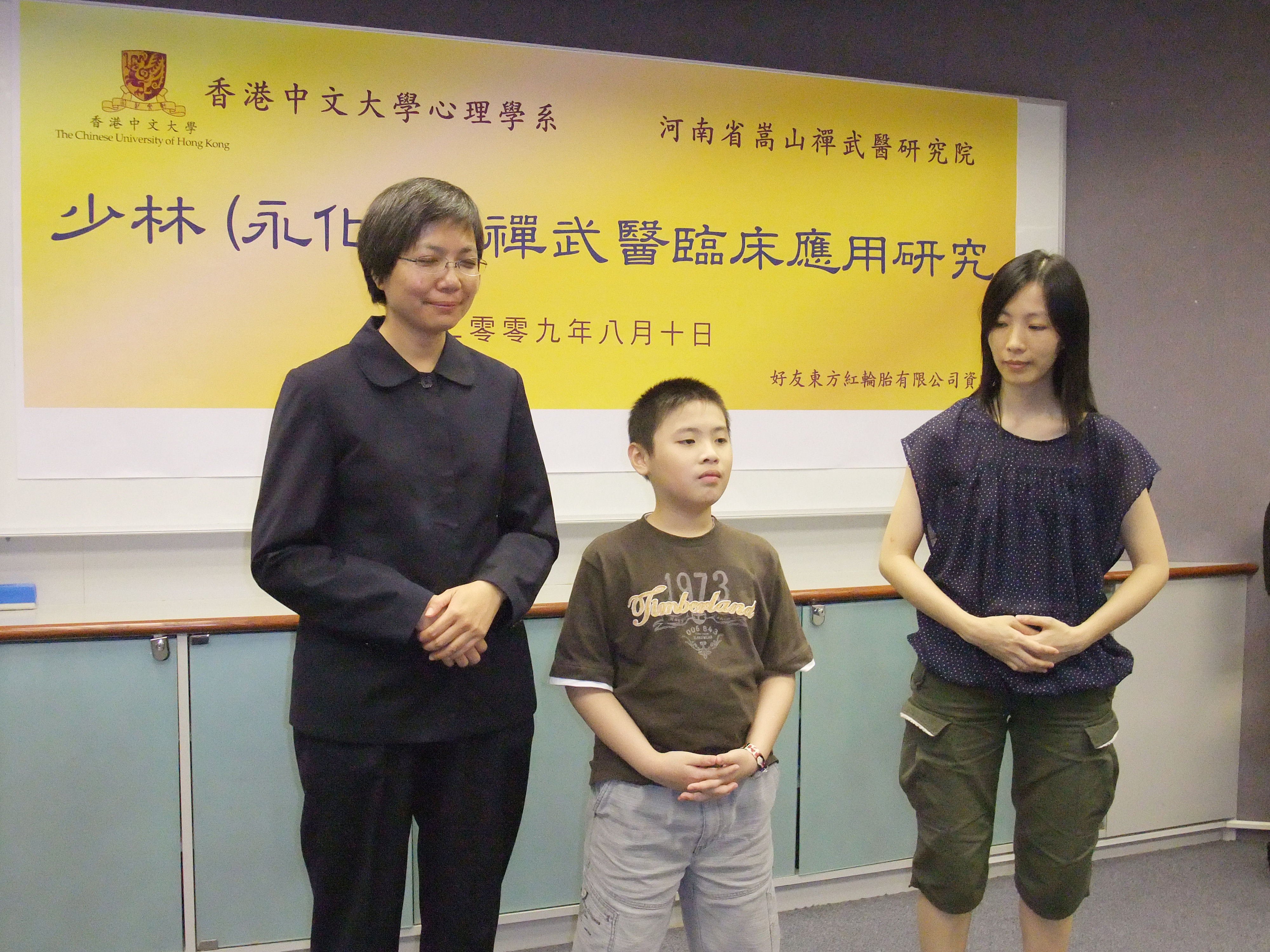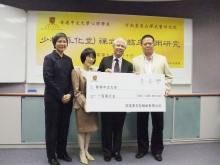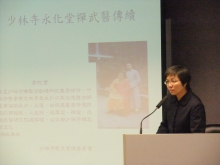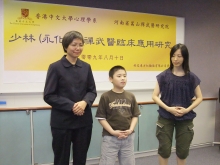CUHK
News Centre
CUHK Psychology Department Receives Donation to Boost Interventions Combining Shaolin Chanwuyi and Neurosciences
The Integrative Neuropsychological Rehabilitation Centre at The Chinese University of Hong Kong (CUHK) is committed to the study and development of integrative interventions based on western neurosciences and Chinese Chan (禪) and health concepts. Prof. Agnes Chan Sui-yin, director of the centre and professor at the Department of Psychology, has long collaborated with a Shaolin monk Master Dejian Shi, director of the Henan Songshan Research Institute for Chanwuyi (河南省嵩山禪武醫研究院), to conduct scientific research on the clinical applications of Chanwuyi, which originated in the Yonghuatang branch of the Shaolin Temple (少林寺永化堂). The aim is to develop evidence-based mind-body intervention methods rooted in Chinese culture for improving mental and cognitive functions, namely the Dejian Mind-body Intervention. The current research targets patients suffering from brain disorders such as autism, mental retardation and dementia in which effective Western drug intervention is not yet available. Clinical observation of some of the cases has shown very encouraging results.
The research project was published in a high-impact American journal, Evidence-based Complementary and Alternative Medicine. It was later included in the database of the US National Library of Medicine, and uploaded to a leading medical website MDLinx. Prof. Chan was also invited by a number of US universities and hospitals to present the project. The centre has recently received a donation of HK$1 million from Mr. Sau Hung Li, Chairman of Good Friend Orient Tyre Co., Ltd for developing research and education programmes on Shaolin Chanwuyi.
The research team led by Prof. Chan recently conducted a study to examine an intervention method of Shaolin Yonghuatang Chanwuyi, namely, Dan Tian breathing (DTB). DTB consists of Passive DTB and Active DTB, and is different from the commonly known method of abdominal or deep breathing. Fifty adults were randomly divided into experimental (practising DTB) and control groups (practising Western relaxation techniques) for a neuroelectrophysiological (EEG) study. The results showed that after a month of practising DTB, the brain revealed a peak performance EEG signal, i.e. increased left-right alpha asymmetry (an index of relaxation and positive mood) and enhanced theta coherence (a measure of attention and alertness). These results are consistent with observations of clinical cases where after a few weeks of intervention, most adults or children show more stable moods and become more attentive.
Brain peak performance is a popular research topic in Western scientific area, and has begun to be applied for clinical intervention, training and education. Though neurofeedback is one possible method of enhancing brain performance, it usually requires 40 to 80 sessions of intensive training guided by professionals. Being time consuming and expensive makes it difficult to popularize the method. By contrast, the Shaolin Yonghuatang’s Dan Tian Breathing method is effective, yet inexpensive and easy to learn. More patients and a wider public will stand to benefit from the promotion of this breathing method.
A video for self-learning of Shaolin Dan Tian Breathing is available free-of-charge at the following websites:
1. Henan Songshan Research Institute for Chanwuyi: www.chanwuyi.com
2. Integrative Neuropsychological Rehabilitation Center: www.cuhk-inrc.com
Free Chinese VCDs will be distributed while stocks last at the following locations:
1. Neuropsychology Laboratory, Department of Psychology Room 347, 3/F, Sino Building, The Chinese University of Hong Kong, Shatin, N.T.
2. Integrative Neuropsychological Rehabilitation Centre Shop 8-11, UG/F, Ap Lei Chau Centre, 138 Lee Chi Road, Ap Lei Chau, Hong Kong
Enquiry hotline: Integrative Neuropsychological Rehabilitation Centre, CUHK (Tel: 3163-4166)
The Department of Psychology of CUHK receives a donation of HK$1 million for developing research and education programmes on Shaolin Chanwuyi. From right: Mr. Sau Hung Li, Chairman of Good Friend Orient Tyre Co., Ltd.; Prof. Paul Lee, Dean, Faculty of Social Science, CUHK; Prof. Fanny Cheung, Chairperson, Department of Psychology, CUHK and Prof. Agnes Chan, Professor, Department of Psychology and Director, Integrative Neuropsychological Rehabilitation Centre, CUHK


